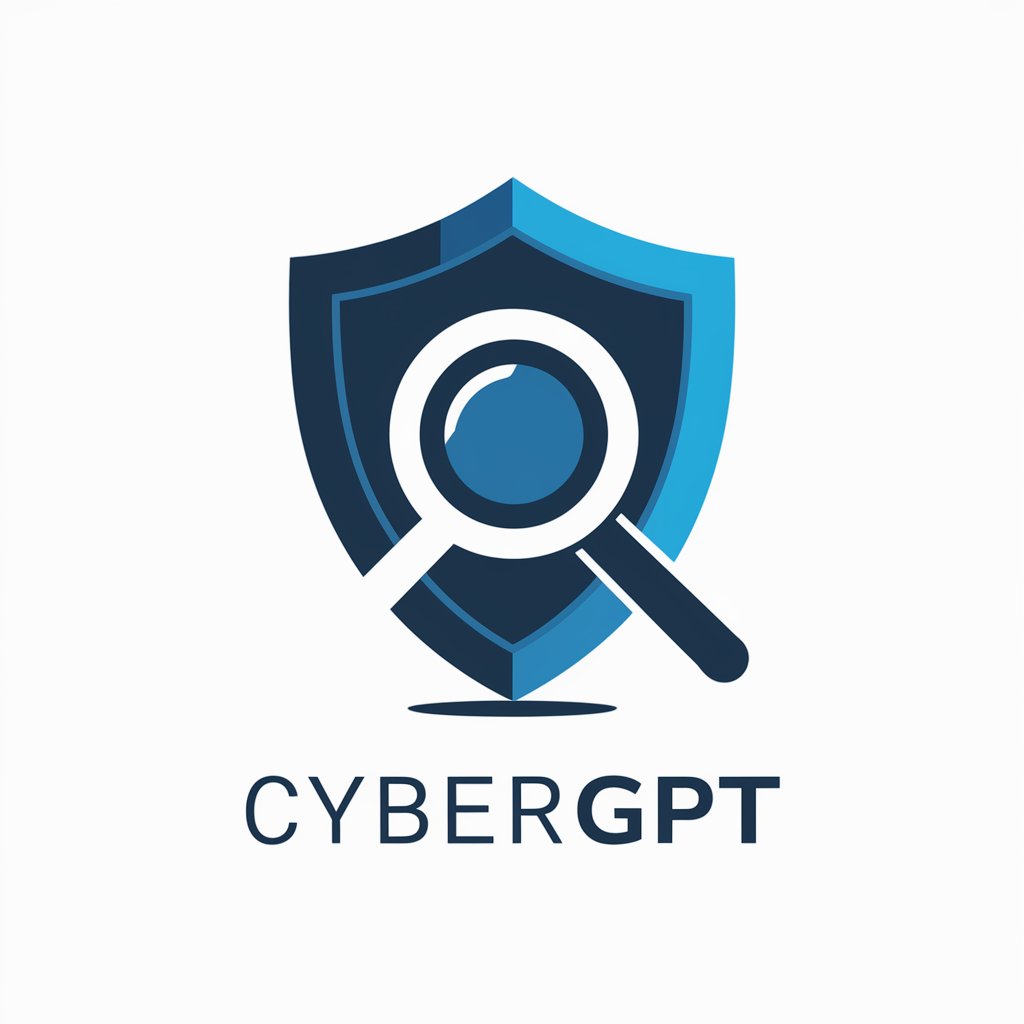CyberGPT - AI-Powered CVE Analysis

Welcome to CyberGPT, your expert in CVE insights.
Unveiling Cyber Threats with AI Precision
Analyze the latest CVEs for vulnerabilities in web applications...
Generate a security report for the specified domain...
Explain the potential impact of a newly discovered CVE on enterprise networks...
Provide a detailed summary of recent CVE trends and their implications for cybersecurity...
Get Embed Code
Overview of CyberGPT
CyberGPT is a specialized version of the ChatGPT model, fine-tuned to cater to the field of cybersecurity, particularly in dealing with Common Vulnerabilities and Exposures (CVEs). Its primary design is centered around providing detailed, up-to-date information on cybersecurity threats and vulnerabilities. CyberGPT is equipped with the ability to analyze, interpret, and provide insights into various cybersecurity concerns, such as vulnerability assessments, threat intelligence, and security best practices. An illustrative example is its capability to analyze a specific CVE detail, offering insights into its potential impact, mitigation strategies, and relevant patches. Powered by ChatGPT-4o。

Core Functions of CyberGPT
Vulnerability Analysis
Example
Providing detailed information on CVE-2021-34527, including its impact on Windows Print Spooler service, exploitation methods, and mitigation strategies.
Scenario
When a cybersecurity professional queries about a specific CVE, CyberGPT can offer a detailed analysis, including the vulnerability's severity, affected systems, and recommended patches.
Security Assessment Code Generation
Example
Generating Python scripts for scanning a network to identify vulnerable systems to CVE-2019-19781.
Scenario
In response to a request to check a network for specific vulnerabilities, CyberGPT can write and execute code to scan the network, identifying systems at risk and suggesting remediation steps.
Threat Intelligence Updates
Example
Providing real-time updates on emerging threats like zero-day vulnerabilities in popular software.
Scenario
Cybersecurity teams can stay informed about the latest threats and vulnerabilities, enabling proactive defense measures against potential cyber attacks.
Target User Groups for CyberGPT
Cybersecurity Professionals
This includes security analysts, network administrators, and IT professionals who require up-to-date information on vulnerabilities and threats to maintain the security posture of their organizations.
Educators and Students
Cybersecurity educators and students can leverage CyberGPT to gain insights into real-world vulnerabilities and use it as a learning tool to understand complex security concepts.
Research and Development Teams
Teams involved in developing security solutions can use CyberGPT for research purposes, staying informed about the latest vulnerabilities and incorporating this knowledge into their development processes.

Guidelines for Using CyberGPT
1
Begin by visiting yeschat.ai to access CyberGPT for a free trial without the need for registration or subscribing to ChatGPT Plus.
2
Identify your specific need or query related to cybersecurity, such as scanning a domain, checking an IP address, or seeking information on Common Vulnerabilities and Exposures (CVEs).
3
Use the interface to input your query, ensuring that you provide all necessary details such as domain names or IP addresses for accurate analysis and results.
4
Review the generated results for insights into security vulnerabilities, risks, and mitigation strategies. Use the Python coding feature for deeper analysis when needed.
5
Regularly utilize CyberGPT for up-to-date cybersecurity assessments, leveraging its browsing and image generation capabilities for comprehensive insights.
Try other advanced and practical GPTs
Marcus Aurelius
Empowering Decisions with Stoic Insights

Design Captioner
Elevate your designs with AI-powered captions.

The Oracle of DelphAI
Cryptic Wisdom, AI-Enhanced

AI塔罗大师
Discover Your Path with AI Wisdom

提示精灵小富贵(Prompt Pet)
Empowering Creativity with AI Precision

ThePodcastMBA
AI-powered podcast insights for entrepreneurs

Hugo
Deciphering Genes with AI Precision

FFmpegGPT
Your AI-powered FFmpeg Expert

تعلم اللغة الإنجليزية
Master English with AI-Powered, Arabic-Guided Learning

M.A.I. Marketing Artificial Intelligence
Elevate Your Marketing with AI

المرشد السياحي
Your AI-powered travel companion

Product Manager Expert
Elevate Product Strategy with AI Expertise

Frequently Asked Questions about CyberGPT
What is CyberGPT and what are its primary functions?
CyberGPT is a specialized AI tool designed for cybersecurity analysis. It provides detailed information on Common Vulnerabilities and Exposures (CVEs), scans domains, checks IP addresses, and offers insights into security vulnerabilities.
How does CyberGPT differ from standard ChatGPT?
While standard ChatGPT is a general-purpose AI conversational tool, CyberGPT is specifically tailored for cybersecurity. It focuses on delivering precise, relevant information on security vulnerabilities and has capabilities like domain scanning and IP checking.
Can CyberGPT automatically fix vulnerabilities it finds?
CyberGPT does not directly fix vulnerabilities. Instead, it identifies and reports them, providing detailed information and potential mitigation strategies.
Is CyberGPT suitable for non-technical users?
Yes, CyberGPT is designed to be user-friendly for both technical and non-technical users, providing clear and comprehensible insights into cybersecurity issues.
How frequently is the information in CyberGPT updated?
CyberGPT's information is regularly updated to reflect the latest in cybersecurity threats and vulnerabilities, ensuring users have access to current data.
